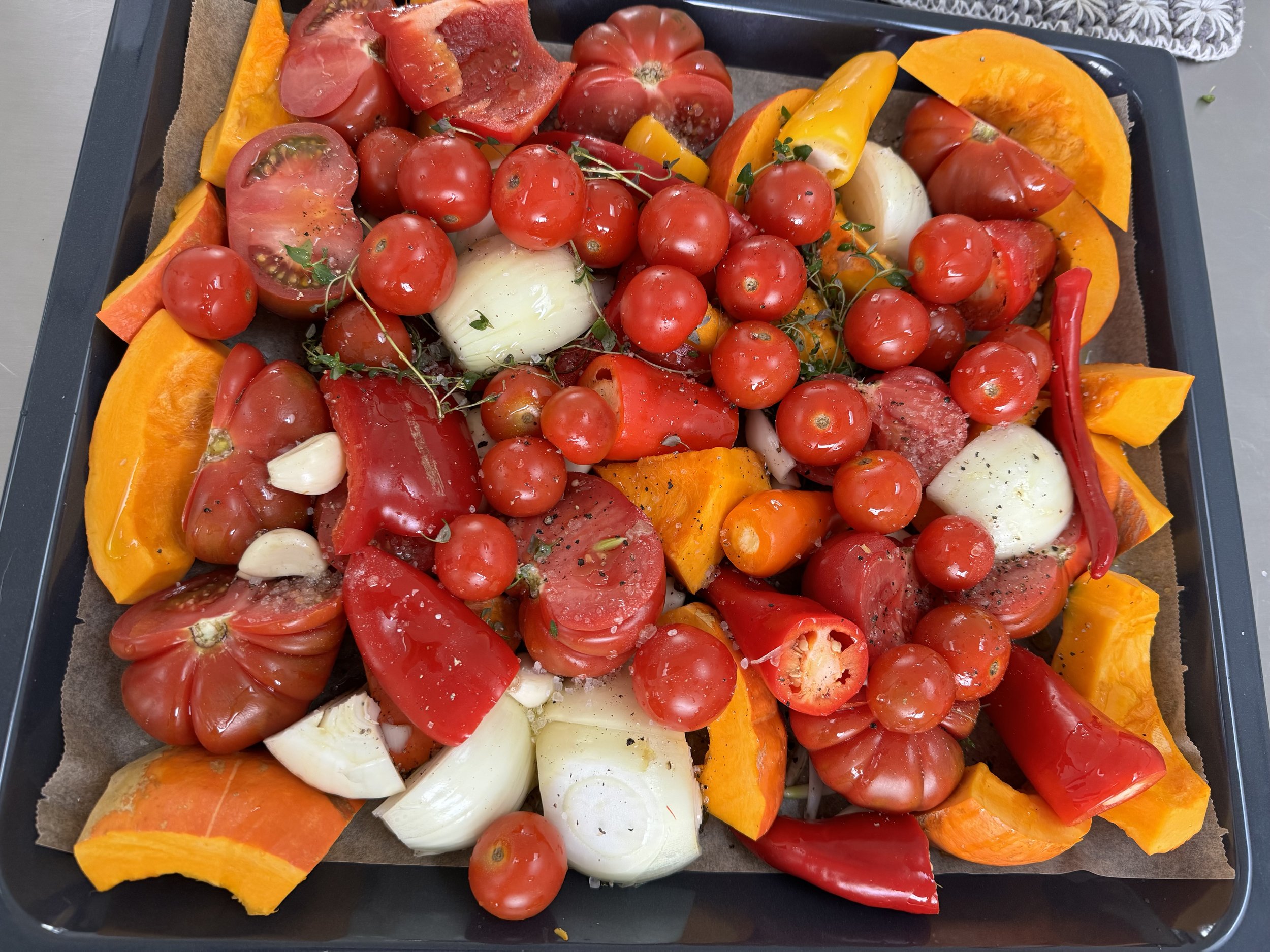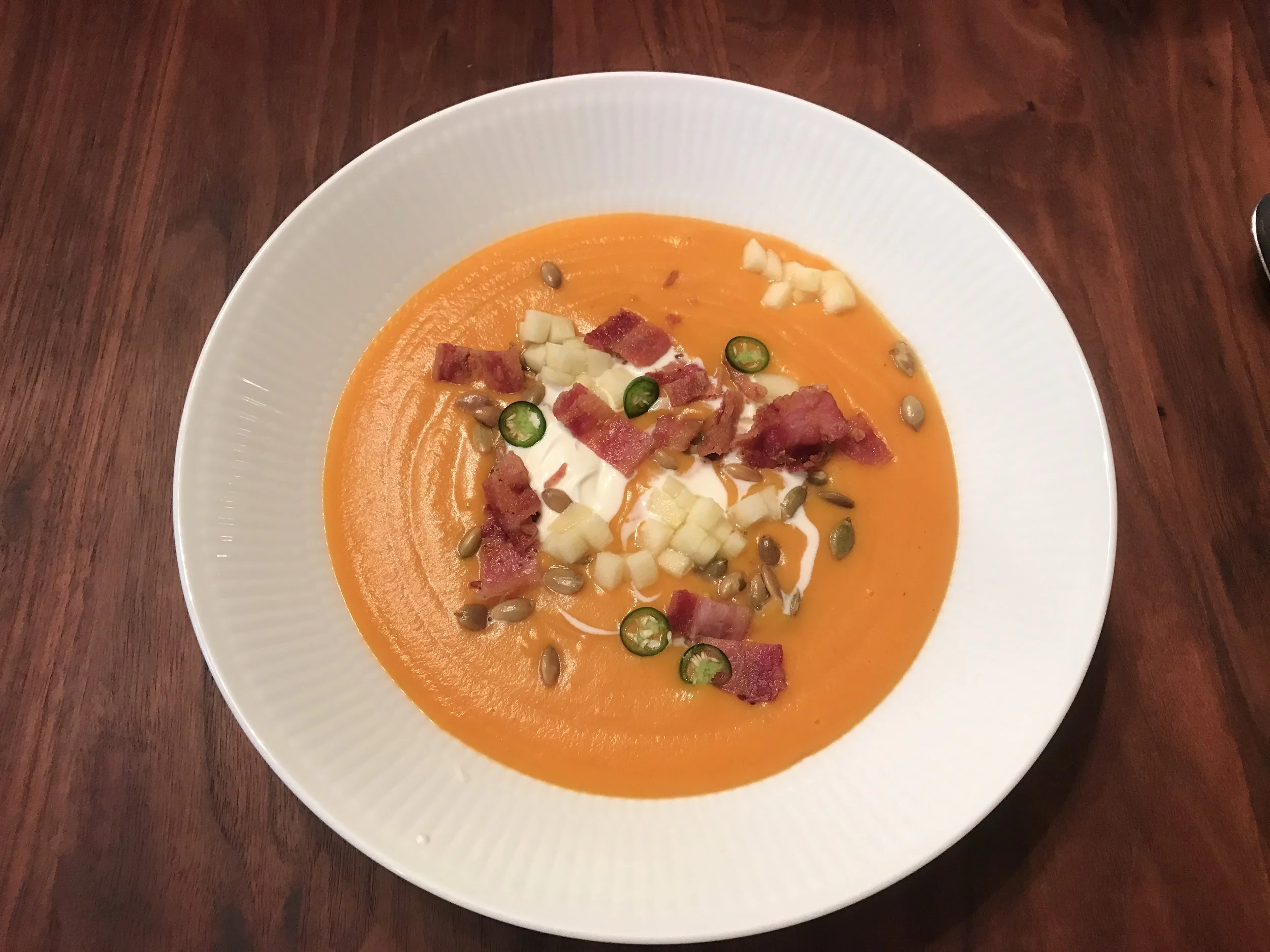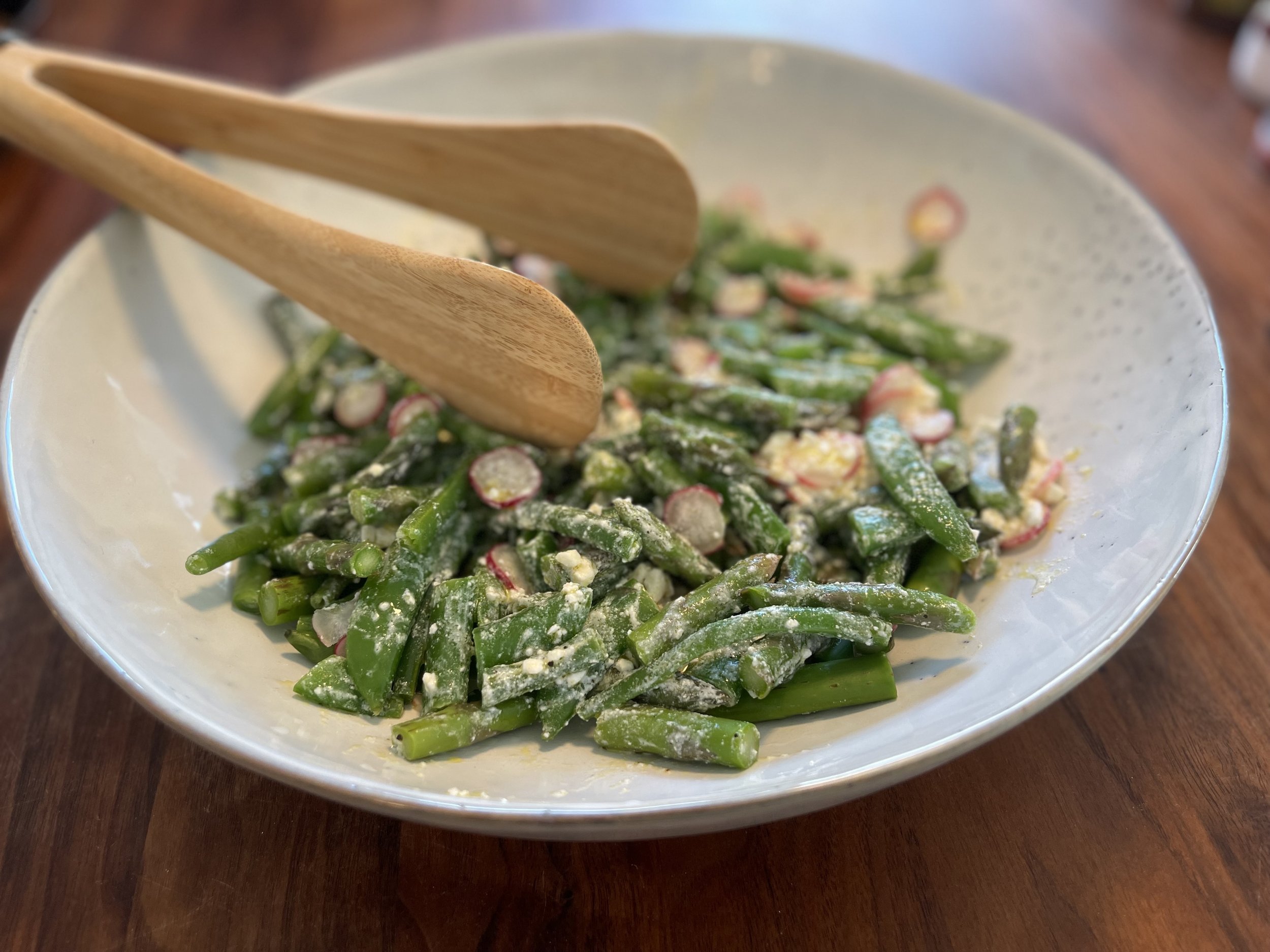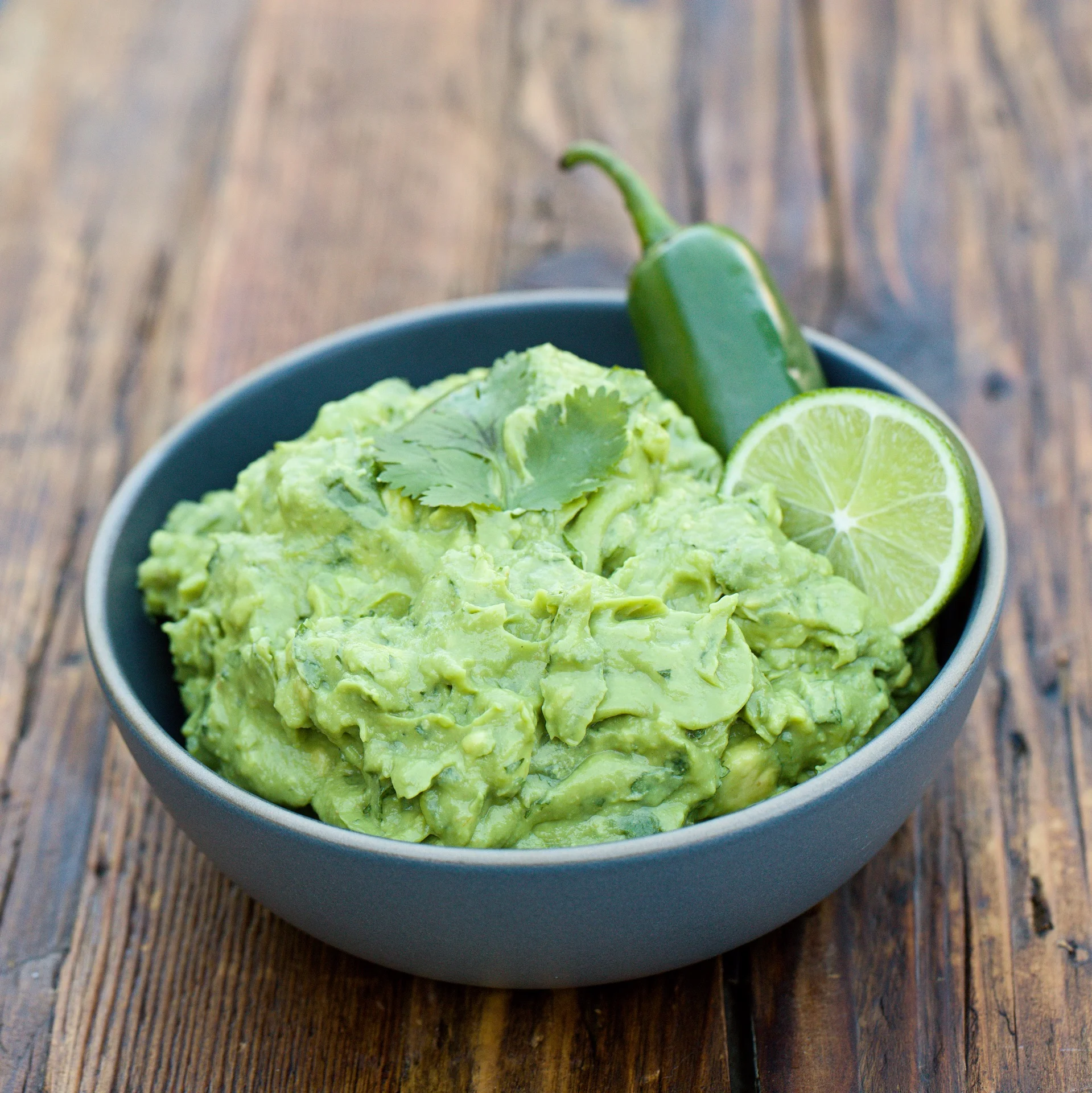Tomato Soup with Blue Cheese Croutons
I have had a love Love LOVE relationship with tomatoes all my life. I can eat tomatoes anytime, anyhow, anywhere. Ok, I'm not a big fan of Bloody Mary's, but no rule without exceptions. I blame the love of tomatoes on my mom. She told me that she craved tomatoes when she was pregnant with me. She would buy a bag of farm fresh tomatoes at the farmers market, and they would all be gone by the time she got home. Maybe I can blame the red/ginger/strawberry blond hair on the tomatoes too????
Well, I do love tomatoes, and I certainly love tomato soup. I can eat tomato in all kinds of weather. Here is a new take on a classic roasted tomato soup. The fennel, gives a nice depth to the soup. I really love the creaminess of this soup, without adding any cream to the soup. This might be contributed to my Vitamix blender. I will never go back to my old blender.
Serves 3-4.
Ingredients:
Soup:
1800 g fresh tomatoes
1 fennel
1 onion
4 garlic cloves
olive oil, for roasting
600 ml chicken or vegetable stock
salt & pepper to taste
a drizzle of a good thick balsamico
Blue cheese croutons:
150 g day-old bread,
2 tablespoons olive oil
50 g blue cheese, crumbled
Directions:
Preheat the oven to 400℉ (200℃)
Line a baking sheet with parchment paper.
Wash tomatoes and cut into halves. Peel onions, wash fennel, and cut them in quarters. Place it all on the baking sheet, cut side up. Sprinkle with olive oil. Roast the vegetables in the oven for 45-50 minutes.
Cut up the bread in bite sized cubes and toss them with the olive oil, spread the croutons on a parchment lined baking sheet. Roast the croutons for about 5-7 minutes until light golden. Spread the blue cheese on the croutons, and bake then for another few minutes until the cheese has melted into the croutons. Make these while the soup is simmering.
In a large pot heat a little bit of olive oil and cook the minced garlic until fragrant, about 20 seconds. Transfer roasted vegetables with the roasting juices into the pot and add stock. Bring to boil and simmer for about 10 minutes.
Purée the soup in batches in a blender* until smooth. (You can also use an immersion blender.) Season with more salt and pepper to taste.
Serve the soup immediately with blue cheese croutons.
Enjoy!
*Be careful when blending hot liquids, it can make the lid pop off, and you may risk getting serious burns on you skin. You can remove the small cap on you blender lid and cover the lid with a clean kitchen towel. You need to hold on to the lid and towel, while blending. This will let the steam from the hot soup escape and avoid the lid from popping off. You can also get blenders like the Vitamix, where you can blend hot liquids, without any hassle.






















